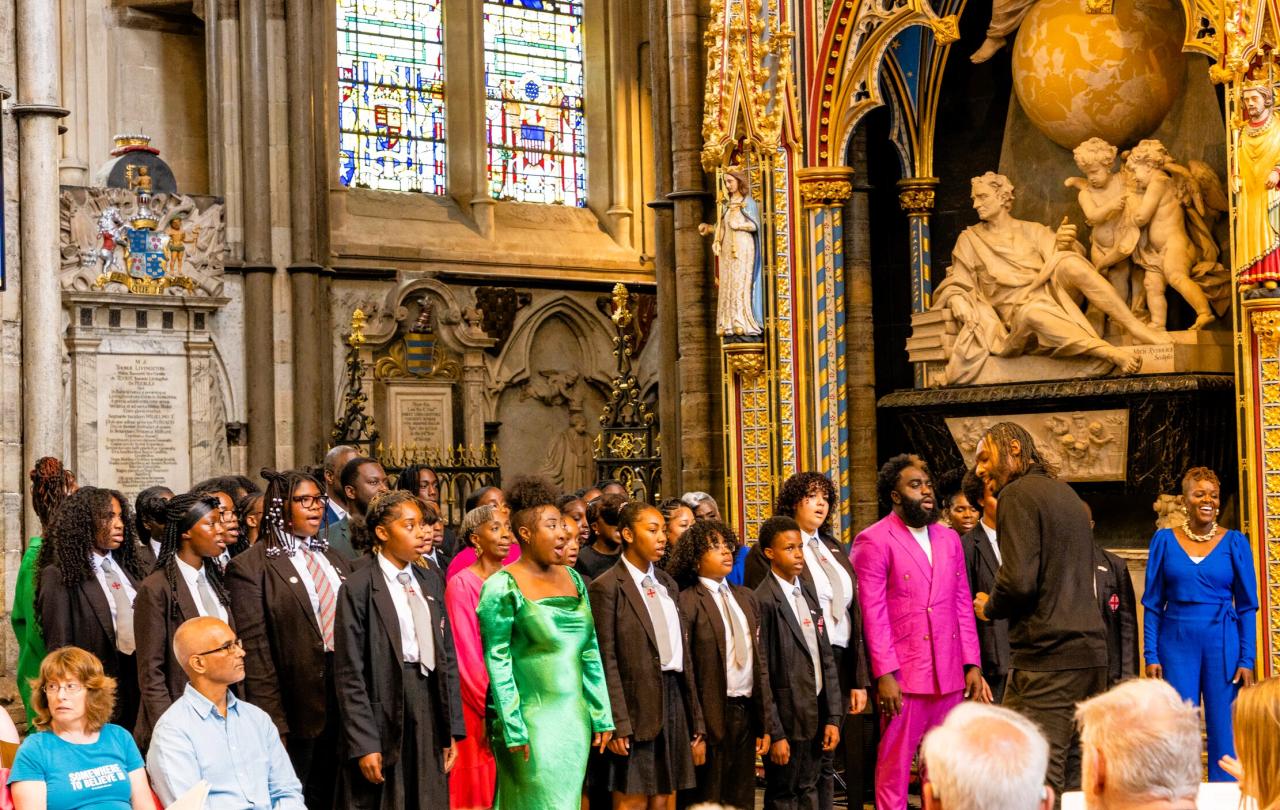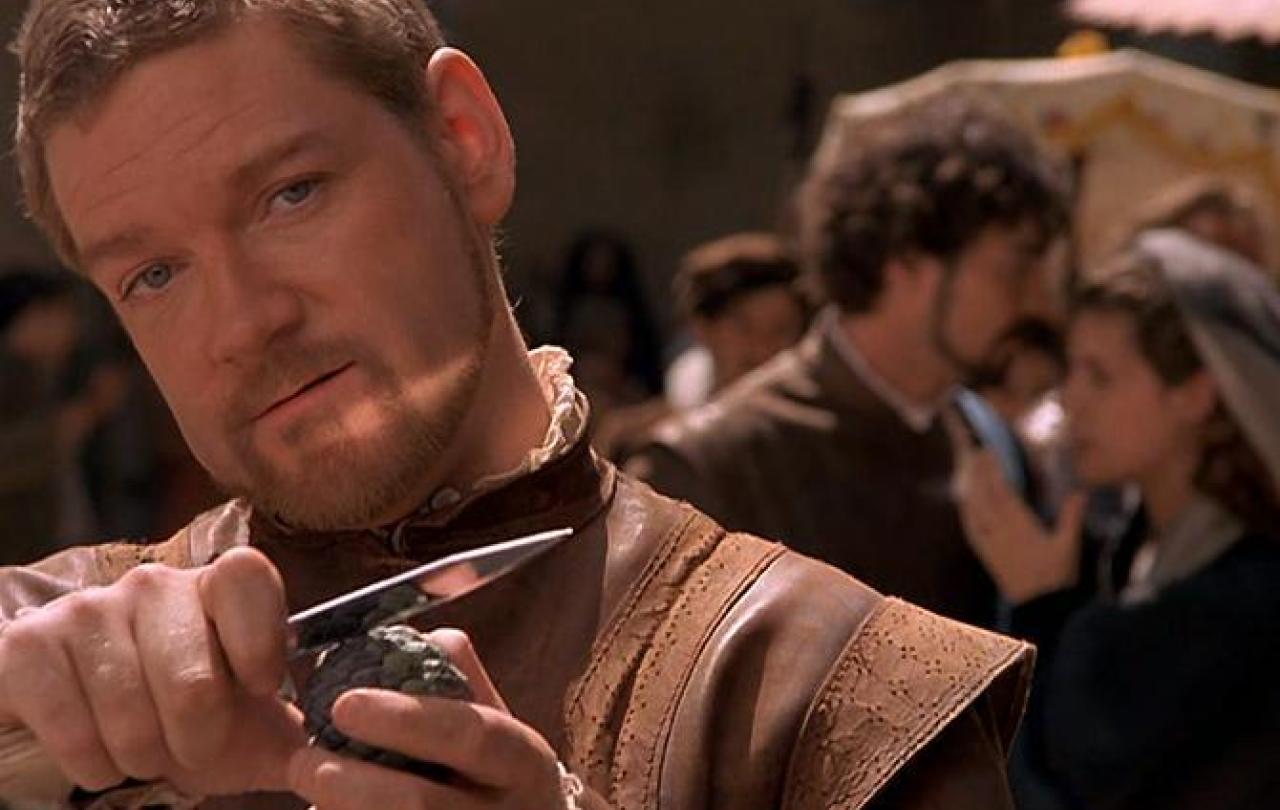
I’m getting close to my 50th birthday, so I’m prone to nostalgia. My mind wanders back forty years to my primary school days in the early 1980s in a village in Sussex.
Once or twice a week, we’d have school assembly. This included singing hymns. Not something that a shy seven-year-old would usually enjoy. But, in fact, we belted out a series of classics with gusto, accompanied by an almost proficient teacher on an almost tuned piano.
To Be A Pilgrim with its lyrics about fighting giants. All Things Bright And Beautiful and those purple headed mountains. And then our favourite When I Needed A Neighbour with the opportunity to scream out the words “I was cold, I was NAKED!” at top volume, cheekily looking at your classmates as you asked, “Were you there?”
The thing about those hymns was that the lyrics stuck. Not just now, decades on, but even back then. And so when a teacher in assembly started to talk to the school about the famine in Ethiopia or the hurricane in the Caribbean, you began to think “Is that my neighbour?” And when your church encouraged you to deliver envelopes door to door to raise money for Christian Aid Week, you asked yourself “Was I there?”
Of course that was the intention of those songs. The story of When I Needed A Neighbour is bound up with the history of social justice movements in the UK and in particular the organisation I work for, Christian Aid.
Christian Aid was founded in 1945 by the British and Irish churches, who felt convicted to do something to tackle the refugee crisis and poverty sweeping across Europe following the Second World War.
By the late 1950s, it was running Christian Aid Week - a big charity appeal to tackle global poverty long before Live Aid or Comic Relief. And as Christian Aid reached its twentieth anniversary in 1965, this annual fundraiser was a big deal.
Such a big deal in fact, it decided to launch the fundraiser in Trafalgar Square by running a Beat & Folk Festival. You can find an old newsreel of the occasion on YouTube. Nelson’s Column is surrounded by thousands of young people listening to the Christian equivalent of Peter, Paul and Mary and getting fired up about global injustice.
For the occasion, the then Christian Aid area secretary for London, Brian Frost, decided that a new song needed to be written. And so he approached the modern hymn writer of the moment, Sydney Carter. Two years early, Sydney had written his most famous hymn Lord of the Dance.
Brian was of that era when Christians were at the heart of the anti-apartheid movement and committed to ecumenical action. And so combining this passion for social justice and the folk song mastery of Carter - When I Needed A Neighbour was born.
As Christian Aid marks its 80th anniversary, we revisited this classic. When you watch the newsreel of an early performance in 1965, you quickly realise its folk credentials. It’s not just the fact that it’s being sung by marvellously hirsute men, it’s also there in the folk melody, guitar accompaniment and sung refrains.
A year later Sydney Carter would record an EP that included Lord of the Dance which featured the folk royalty of Martin Carthy on guitar. For folk aficionados, you’ll know him as one of the English folk music greats - married to the incredible Norma Watterson and father to Eliza Carthy. For those less familiar with the genre, he was also an important inspiration for Paul Simon and Bob Dylan - yes, him off A Complete Unknown.
There’s no evidence that Martin appeared on When I Needed A Neighbour but I think his involvement a year later confirms that the song sits firmly in the Sixties folk music boom. To young ears, it would have been hip. To older ears, perhaps scandalous.
How do you reimagine such a classic as When I Needed a Neighbour, 60 years on from its birth - and now 80 years into Christian Aid’s history? Especially at a time when we witness our global neighbours in Gaza, Sudan, Ukraine, the DRC, and more wondering if - in the face of conflict and humanitarian disaster - anyone is there.
We started with the lyrics. In 1965, Sydney Carter captured something of the simplicity of the issue at hand. People are cold, hungry and in need of shelter. And there’s something that each and every one of us can do, in our common humanity, no matter who we are, whatever our creed, ethnicity or background.
Within a few years of the song being written however, Christian Aid had a lightbulb moment - it wasn’t enough for us to respond to emergencies around the world. Not enough also to work with communities on long term economic development. No, if are to live out God’s call to act justly and to love mercy, then we needed to be part of movements tackling the unjust structures and systems that result in poverty and inequality around the world.
And so in returning to When I Needed A Neighbour and working with hymn writer Ally Barrett, we have now written new words that act as a call to each and every one of us to be a neighbour by speaking out for justice. This is something that Christian Aid has done throughout our history, calling for action to drop the debt in the 1990s or as one of the first development organisations campaigning for climate justice in the 2000s.
This week we marked our 80th anniversary at Westminster Abbey by recommitting ourselves to God’s call for justice. And this included the Kingdom Choir (who famously sang at Harry and Megan’s wedding) and the Sacred Choir from Twyford Church of England school in London performing a gospel-tinged version of When I Needed A Neighbour.
My hope is that, 60 years on, the song will still carry resonance. In an age when conflicts rage, the climate crisis runs riot and inequality is rife, isn’t it time to answer When I Needed A Neighbour’s call again?
Support Seen & Unseen
Since Spring 2023, our readers have enjoyed over 1,000 articles. All for free.
This is made possible through the generosity of our amazing community of supporters.
If you enjoy Seen & Unseen, would you consider making a gift towards our work?
Do so by joining Behind The Seen. Alongside other benefits, you’ll receive an extra fortnightly email from me sharing my reading and reflections on the ideas that are shaping our times.
Graham Tomlin
Editor-in-Chief





